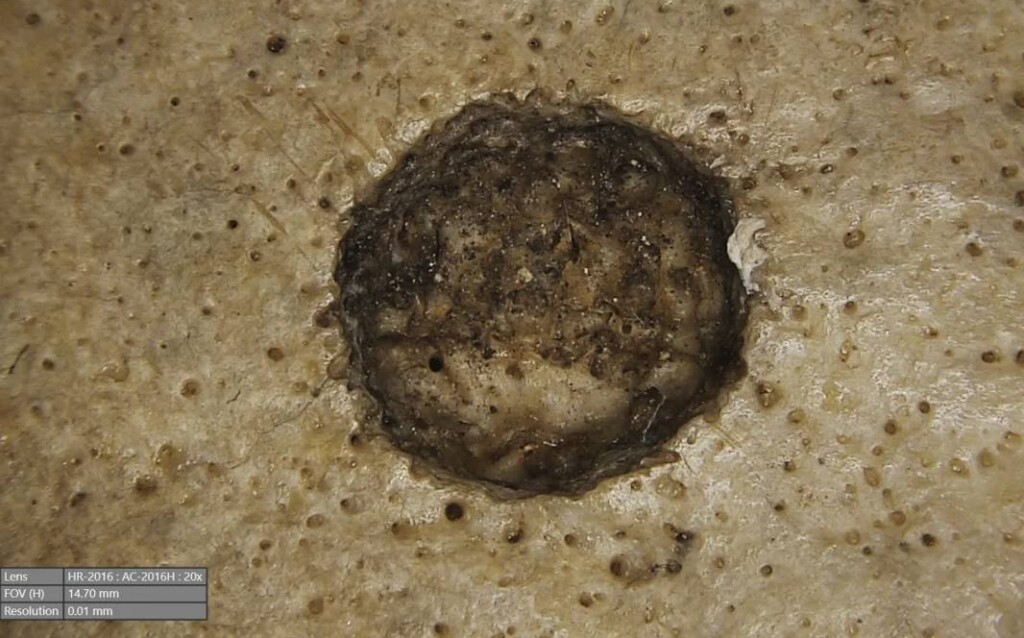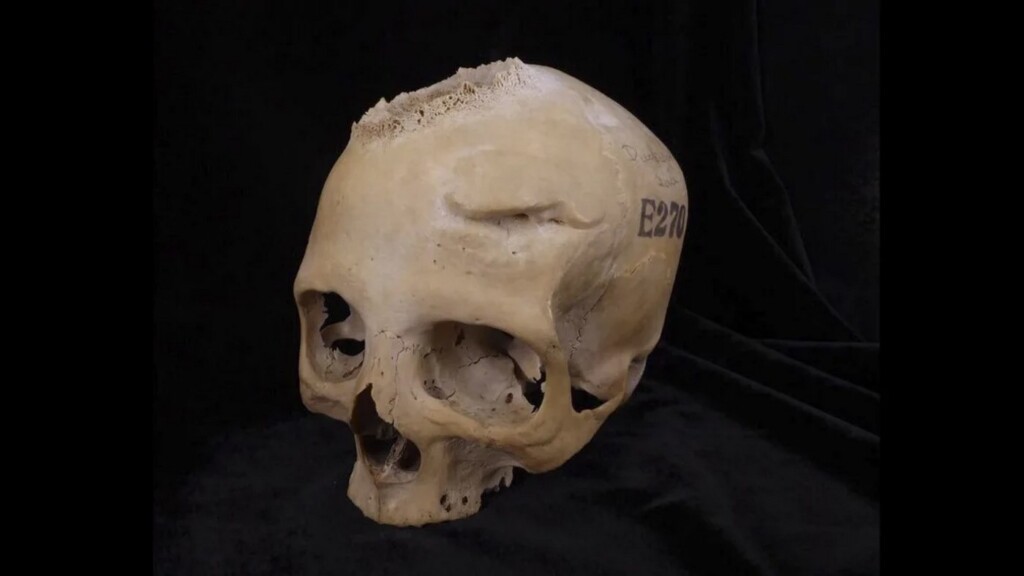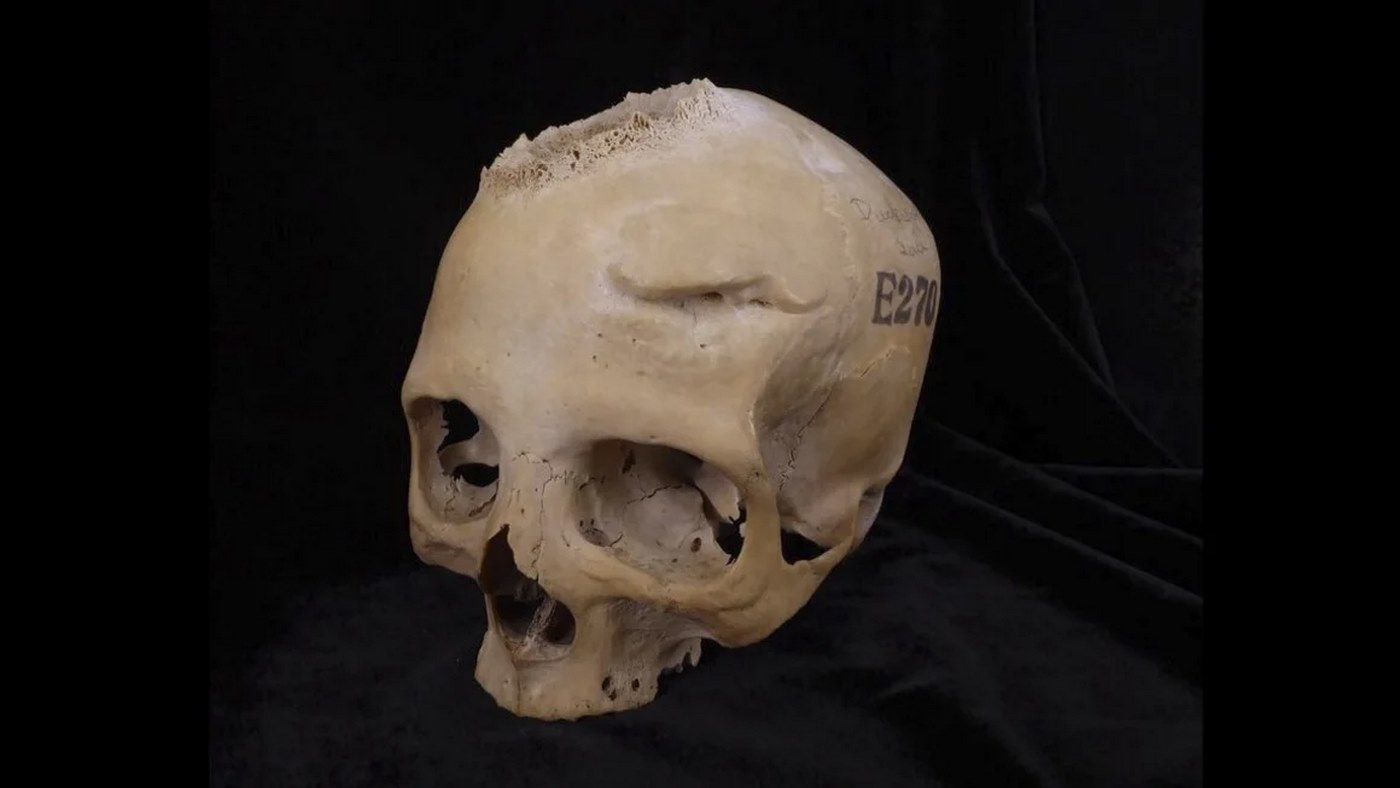
As with many things, a discovery from ancient Egypt has put a time stamp on the development of something: cancerous tumor removal from the brain.
A man living sometime between 2,686 BCE and 2,345 BCE was nearing 40 when he developed malignant brain tumors, scarring on his cranial walls revealed.
But scientists studying the skull with micro-computed tomography (CT) scans found evidence of tiny cut markets from sharp implements, meaning that ancient Egyptian physicians were either attempting to remove the malignancies or were performing an autopsy to study them.
Either way, scientists at the Duckworth Laboratory at Cambridge in the UK say it’s a first in medical history.
“It was the very first time that humanity was dealing surgically with what we nowadays call cancer,” senior study author Dr. Edgard Camarós, a professor at the University of Santiago de Compostela in Coruña told CNN.
“If those cut marks were done with that person alive, we’re talking about some kind of treatment directly related to the cancer,” or “it means that this is a medical autopsy exploration in relation to that cancer.”
Evidence of cranial surgery from the Neolithic period has been found, but this is the first case of it involving cancer.
The medical knowledge of Egyptian physicians is known to be sophisticated, as several treatises and medical dictionaries have come down to us on papyrus. They detail lists of ailments and treatments, including one in which a woman is marked as having breast cancer tumors. Interestingly, one such text, called the Edwin Smith papyrus, notes there’s no cure or treatment for breast cancer.
MORE STORIES LIKE THIS: Evidence of Amputation in Prehistoric Times Shows Patient Surviving for a Decade–Proves Medical Expertise Existed
It’s a fascinating indication that cancer was for these ancient physicians a kind of frontier science, and the tumors removed from the man’s skull would have been critical to expanding the scope of their understanding.

Another skull from the Duckworth collection labeled E270, dating about 2,000 years later, also showed evidence that malignant tumors had damaged the bone. While the tumors were not removed, this woman’s skull had signs of a prior medical intervention for a fracture which she carried for years before her death.
MORE STORIES LIKE THIS: Thousands of Years Ago, a Woman Underwent Two Surgeries to Her Head–and Survived Both Procedures
In perhaps both cases, treatment to the skull would have been incredibly painful, and couldn’t not be accomplished neatly without some kind of anesthesia. The Egyptians must therefore have had ways to create powerful painkillers beyond the application of simple analgesic plants.
The Duckworth skulls provide an incredible snapshot of the capabilities of ancient surgeons, as well as demonstrate that cancer isn’t just limited to humans who enjoy the longer lifespans of today, but has instead played a role in human mortality even in the distant past.
SHARE This Truly Incredible Evidence Of Ancient Medicine With Your Friends…




















